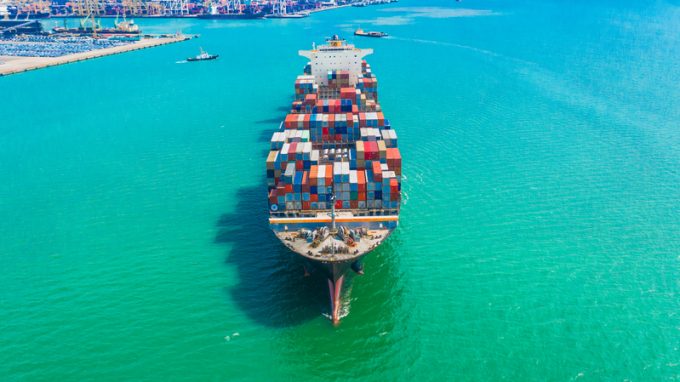Container spot rates have peaked as all major trades see prices fall
There was more evidence in this week’s container port freight markets that peak prices on ...
TFII: SOLID AS USUALMAERSK: WEAKENINGF: FALLING OFF A CLIFFAAPL: 'BOTTLENECK IN MAINLAND CHINA'AAPL: CHINA TRENDSDHL: GROWTH CAPEXR: ANOTHER SOLID DELIVERYMFT: HERE COMES THE FALLDSV: LOOK AT SCHENKER PERFORMANCEUPS: A WAVE OF DOWNGRADES DSV: BARGAIN BINKNX: EARNINGS OUTODFL: RISING AND FALLING AND THEN RISING
TFII: SOLID AS USUALMAERSK: WEAKENINGF: FALLING OFF A CLIFFAAPL: 'BOTTLENECK IN MAINLAND CHINA'AAPL: CHINA TRENDSDHL: GROWTH CAPEXR: ANOTHER SOLID DELIVERYMFT: HERE COMES THE FALLDSV: LOOK AT SCHENKER PERFORMANCEUPS: A WAVE OF DOWNGRADES DSV: BARGAIN BINKNX: EARNINGS OUTODFL: RISING AND FALLING AND THEN RISING

Low-sulphur surcharges announced by ocean carriers on 1 December show “significant variations”, even within alliances, according to Alphaliner analysis.
As The Loadstar reported last Friday, carriers appear to have succeeded in passing on most of the perceived cost implications of IMO 2020 to the spot market and short-term shipper contracts, but the consultant questioned the lack of transparency in setting the surcharges.
“The wide variations in the new fuel surcharge and lack of complete transparency on their calculations is bound to fuel shipper concerns of overcharging by carriers to compensate for lower freight rates,” it said.
Indeed, the Alphaliner analysis could find no evidence of a relationship between the surcharge and the relative efficiency of the carriers, based on the average size of vessels deployed.
For example, the second-lowest low-sulphur surcharge of 10 carriers surveyed on the Asia-North Europe trade is $92 per teu, by Japanese container line ONE, even though the carrier deploys the smallest ships on the route.
Moreover, its OBS (ONE bunker surcharge) is significantly lower than THE Alliance partners Hapag-Lloyd, whose ITC (IMO 2020 transition charge) is $135 per teu, and Yang Ming’s BK (new bunker charge) of $125 per teu.
Additionally, South Korea’s HMM, which is buying slots from THE Alliance from Asia to North Europe prior to joining on 1 April next year, has set its ECC (environmental compliance charge) at $112 per teu, undercutting all its new partners except ONE.
Within the Ocean Alliance, CMA CGM has the highest Asia-North Europe surcharge, its LSS20 (low-sulphur surcharge 2020) is $120 per teu, while OOCL, with its LSA (low-sulphur adjustment), and Evergreen, with a ISOCC (IMO SOx compliance charge), are charging shippers $106 per teu.
Inexplicably, COSCO, OOCL’s parent, will charge $105 per teu on the route via its FAF (fuel adjustment fee).
2M partner Maersk has set its Asia to North Europe EFF (environmental fuel fee) at $116 per teu, while MSC has the lowest surcharge of all the carriers surveyed by Alphaliner its GFS (global fuel surcharge) being just $71 per teu, 63% below its 2M partner.
MSC could argue that its early pro-scrubber strategy, which will eventually see half its fleet with exhaust gas cleaning systems (EGCS) installed, enabling those ships to continue to consume the cheaper HFO (heavy fuel oil) after 1 January, will make its bunker bill cheaper than Maersk’s, which was late to the scrubber party and will only have between 10%-15% of its vessels fitted with EGCS.
And shippers loading containers onto a 2M vessel, whether it is an MSC ship with scrubbers, or a Maersk vessel consuming LSFO, will find it more expensive to book with the Danish carrier.
Furthermore, HMM which remains as a slot charterer on the 2M’s Asia-North Europe vessels until next April will also undercut Maersk, albeit that the carrier will no doubt recover its $116 surcharge from HMM.
Comment on this article